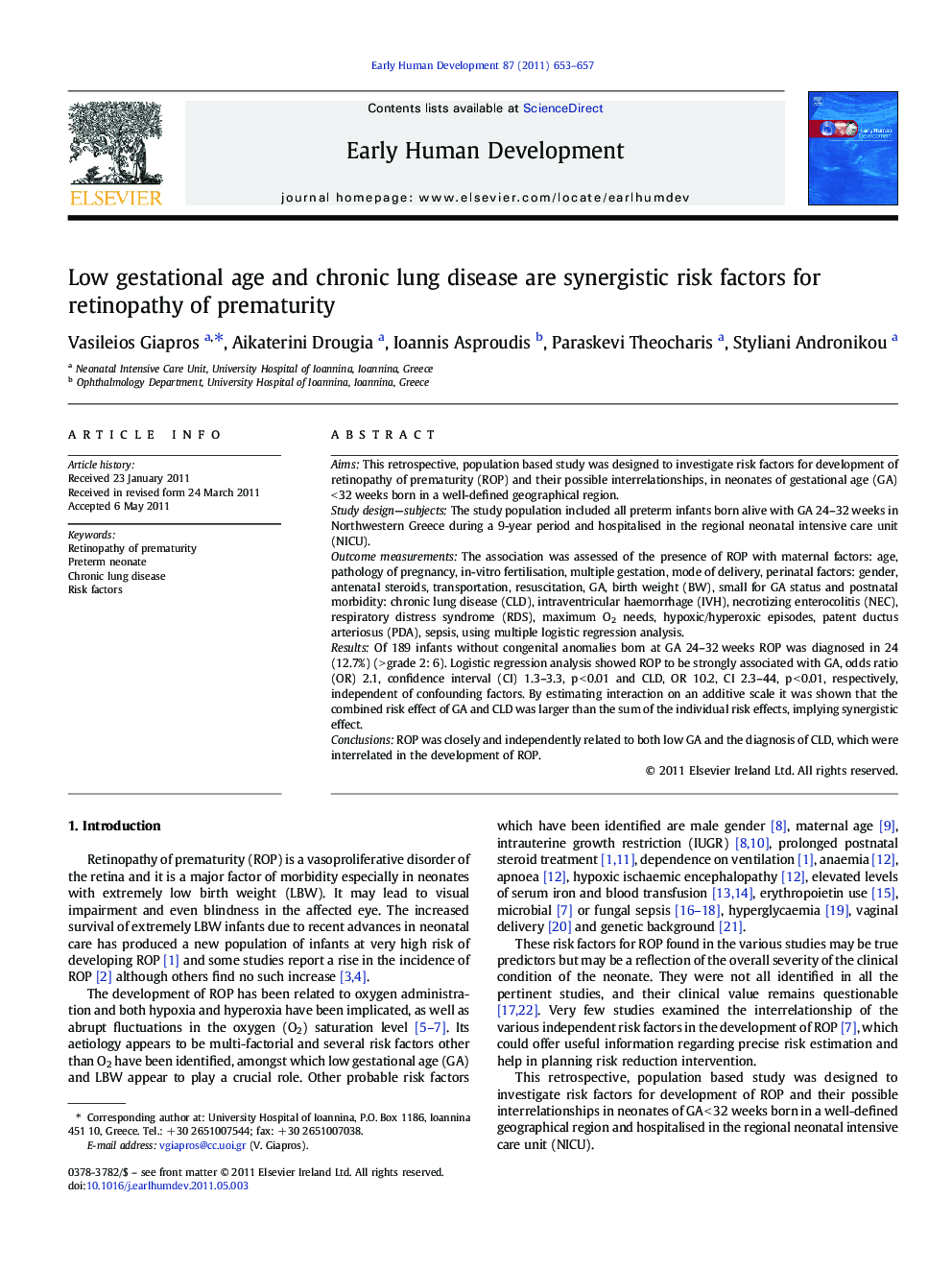| Article ID | Journal | Published Year | Pages | File Type |
|---|---|---|---|---|
| 3917395 | Early Human Development | 2011 | 5 Pages |
AimsThis retrospective, population based study was designed to investigate risk factors for development of retinopathy of prematurity (ROP) and their possible interrelationships, in neonates of gestational age (GA) < 32 weeks born in a well-defined geographical region.Study design—subjectsThe study population included all preterm infants born alive with GA 24–32 weeks in Northwestern Greece during a 9-year period and hospitalised in the regional neonatal intensive care unit (NICU).Outcome measurementsThe association was assessed of the presence of ROP with maternal factors: age, pathology of pregnancy, in-vitro fertilisation, multiple gestation, mode of delivery, perinatal factors: gender, antenatal steroids, transportation, resuscitation, GA, birth weight (BW), small for GA status and postnatal morbidity: chronic lung disease (CLD), intraventricular haemorrhage (IVH), necrotizing enterocolitis (NEC), respiratory distress syndrome (RDS), maximum O2 needs, hypoxic/hyperoxic episodes, patent ductus arteriosus (PDA), sepsis, using multiple logistic regression analysis.ResultsOf 189 infants without congenital anomalies born at GA 24–32 weeks ROP was diagnosed in 24 (12.7%) (> grade 2: 6). Logistic regression analysis showed ROP to be strongly associated with GA, odds ratio (OR) 2.1, confidence interval (CI) 1.3–3.3, p < 0.01 and CLD, OR 10.2, CI 2.3–44, p < 0.01, respectively, independent of confounding factors. By estimating interaction on an additive scale it was shown that the combined risk effect of GA and CLD was larger than the sum of the individual risk effects, implying synergistic effect.ConclusionsROP was closely and independently related to both low GA and the diagnosis of CLD, which were interrelated in the development of ROP.
